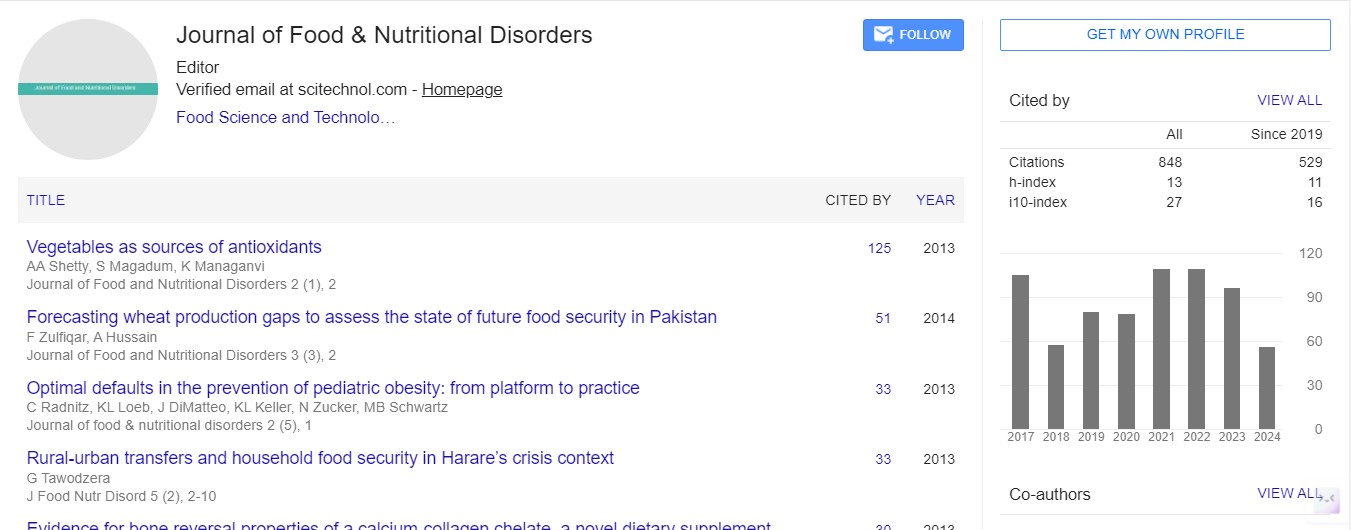A review of toxic and non-toxic cyanobacteria species occurrence in water supplies destined for maize meal production process: A case study of Vhembe district
Mulalo Mutoti, J R Gumbo and AIO Jideani
University of Venda, South Africa
: J Food Nutr Disor
Abstract
Cyanobacteria have been part of human diet for thousands of years. Cyanobacteria can multiply quickly in surface waters and form blooms under favorable conditions, such as high temperature, intense light, high pH, and increased availability of nutrients, especially phosphorous and nitrogen, artificially released by anthropogenic activities. Consumption of edible cyanotoxins such as Spirulina may reduce risks of cataracts and age related macular degeneration. Sulphate polysaccharides exhibit antitumor, anticoagulant, antimutagenic, anti-inflammatory, antimicrobial and even antiviral activity against HIV, herpes and hepatitis. In humans, exposure to cyanotoxins can occur in various ways; however, the oral route is the most important. This is mainly through drinking water or eating contaminated foods; it may even involve ingesting water during recreational activities. This paper seeks to present a review on cyanobacteria/ contamination of water and food and implications for human health: In particular, examining of the water quality used during maize seed that passes through mill grinding process. In order to fulfill the objective, this paper starts with theoretical framework on cyanobacteria contamination of food that will guide review of present paper. A number of methods for decontaminating cyanotoxins in food are currently available. Therefore, physical, chemical and biological methods for treating cyanotoxins are reviewed and compared. Furthermore, methods that are utilized for detecting and identifying cyanobacteria present in water and food were also informed in this review. This review has indicated various routes through which humans can be exposed to cyanotoxins. Accumulation of cyanotoxins, mainly microcystins, in food has raised awareness of the importance of food as microcystins exposure route to human body. Therefore, this review demonstrates the importance of expanding research on cyanobacteria/ cyanotoxin contamination of water and food. This will help providing information regarding the prevention or minimization of contamination of water and food, and also reduction or removal of contamination through treatment processes.
Biography
E-mail: mulalo.mutoti@univen.ac.za
 Spanish
Spanish  Chinese
Chinese  Russian
Russian  German
German  French
French  Japanese
Japanese  Portuguese
Portuguese  Hindi
Hindi 
